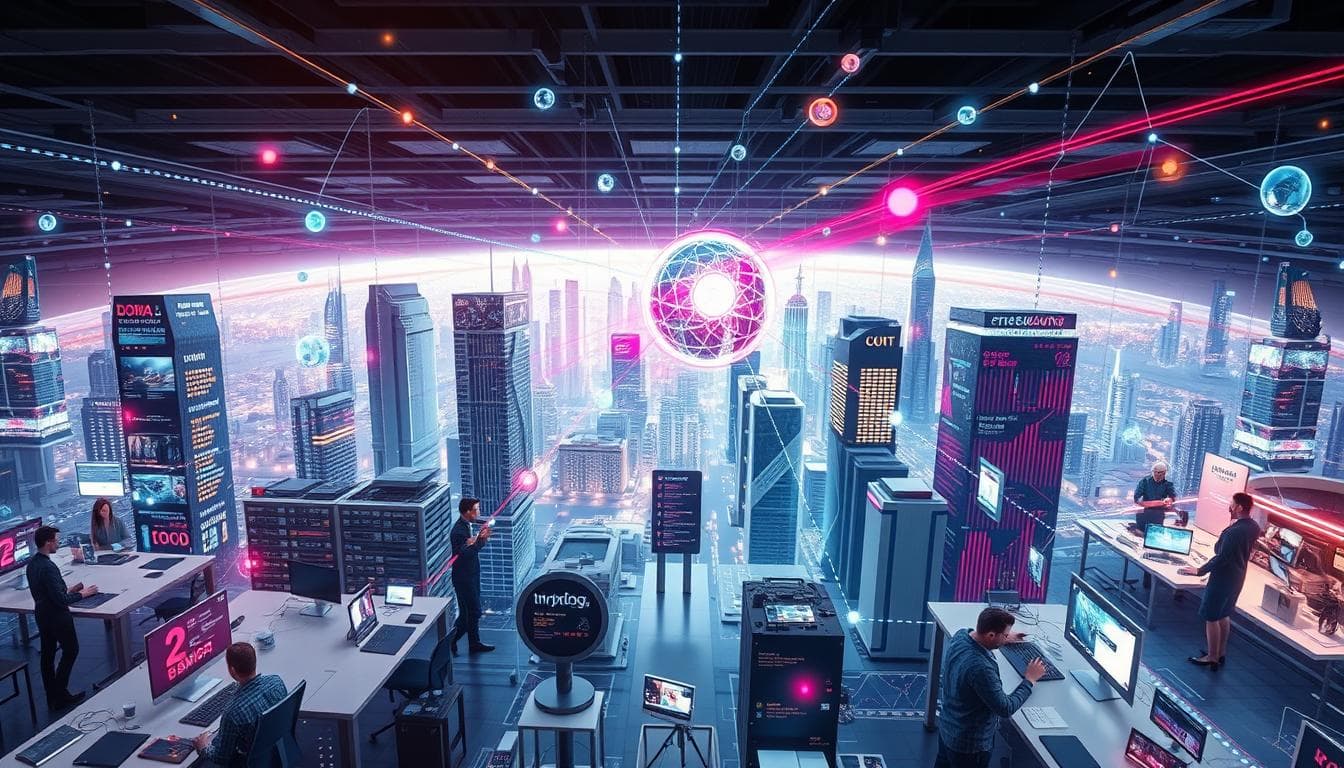Understanding B2B Experience: A Complete Guide
Staff Writer • January 1, 2025 • Uncategorized, marketing, survey

In the fast-paced world of business-to-business (B2B) interactions, great customer experience (CX) is vital. B2B experience covers all interactions between businesses and their corporate clients. This includes everything from the first contact to ongoing support after a sale. This guide will explore the details of B2B CX, the main differences between B2B and B2C, and how to improve your brand's position in the market.
Key Takeaways
- B2B experience involves complex relationships, multiple stakeholders, and longer decision-making processes, unlike B2C.
- Effective B2B CX management is crucial for customer satisfaction, loyalty, and business success.
- Challenges in B2B CX include internal misalignment, lack of technical support, siloed data, and delayed digital transformation.
- Personalization, customization, and long-term relationship building are more significant in B2B than in B2C.
- Leveraging technology, such as chatbots and omnichannel approaches, can enhance the B2B customer experience.
What is B2B Experience
In the world of business-to-business (B2B) interactions, b2b user experience is key. It's about all the interactions and touchpoints between businesses and their clients. This includes digital interactions, customer service, and managing the relationship.
The b2b product experience shapes how people see a company and drives sales. It's crucial for success.
Defining B2B Customer Experience
B2B customer experience is about making interactions personal and building long-term partnerships. It's different from B2C, which focuses on quick, one-size-fits-all solutions. B2B is about deeper relationships, customized solutions, and focusing on the return on investment (ROI).
Key Components of B2B Experience
- Personalization: Tailoring the experience to the specific needs and preferences of each B2B client.
- Long-term Partnerships: Cultivating mutually beneficial, enduring relationships with B2B customers.
- Addressing Multiple Stakeholders: Catering to the diverse requirements and decision-making processes of various stakeholders within a B2B organization.
B2B vs B2C Experience: Understanding the Differences
B2B and B2C experiences both aim to deliver great customer interactions. But, they differ in approach. B2B needs more customization, hands-on support, and focuses on ROI. B2C offers scalable, self-service solutions.
The decision-making process in B2B is more complex. It involves multiple stakeholders and deeper relationship-building.
https://www.youtube.com/watch?v=fTqPLs9Acq8
The trend of "consumerization" in B2B is growing. B2B buyers want the same intuitive, quick, and seamless digital experiences as B2C buyers. By understanding these differences, businesses can create personalized b2b selling experiences. This resonates with B2B clients and drives growth.
Essential Elements of Successful B2B Experience Strategy
Creating a great b2b service experience strategy needs a mix of things. It starts with knowing the customer's journey and working together to make interactions smooth.
Journey mapping is key. It looks at all the ways customers interact with your brand. By finding out what matters most to them, you can make them happier and more loyal. Also, having a CX committee is important. It's a team that makes sure everyone in the company thinks about the customer first.
Behind it all is the power of data-driven insights. Using tools like Net Promoter Score (NPS) surveys helps you understand what customers want and need. Showing how improving the b2b experience can boost your bottom line is crucial.
Top b2b companies are leading the way with new ideas. For example, HubSpot uses chatbots for round-the-clock help. Hootsuite focuses on making things better based on what customers say. IBM makes sure new cloud storage customers get off to a great start, proving they're a reliable partner.
By using journey mapping, teamwork, and data, businesses can create a b2b service experience strategy that really connects with customers. This approach helps them grow in a lasting way.
Conclusion
B2B customer experience is key in today's market. It's about building strong, lasting partnerships with business customers. To succeed, you need to know what they want, use tech for personal interactions, and listen to their feedback.
Putting CX first helps B2B companies make customers happy and loyal. This leads to growth and success. The future of B2B commercial experience is about mixing personal touches with digital efficiency. 🌟🤝
To lead in the b2b experience strategy, B2B companies must keep innovating and focus on the customer. This way, they can improve their services, build stronger relationships, and thrive in a changing world.
FAQ
What is B2B experience?
B2B experience is about all interactions between businesses and their corporate customers. It involves complex relationships and many stakeholders. It also has longer decision-making processes.
B2B CX focuses on long-term partnerships and ROI. It aims to meet specific business needs.
How does B2B customer experience differ from B2C?
B2B customer experience is more complex. It has longer decision-making processes and focuses on long-term partnerships and ROI. It needs more customization and hands-on support.
Unlike B2C, which offers scalable solutions, B2B requires tailored support.
What are the key components of a successful B2B experience strategy?
A successful B2B CX strategy includes mapping the customer journey and forming a cross-functional CX committee. It also uses data insights.
Journey mapping helps identify key touchpoints and areas for improvement. A CX committee ensures all departments focus on the customer. Data insights help understand customer preferences and pain points.
What are some examples of effective B2B customer experience?
Effective B2B CX examples include HubSpot's chatbots and Hootsuite's NPS improvements. IBM's specialized onboarding for cloud storage customers is another example.
What is the future of B2B customer experience?
The future of B2B CX combines personalized, human-centric approaches with digital solutions. By focusing on CX, B2B companies can improve customer satisfaction and loyalty. This drives business growth.